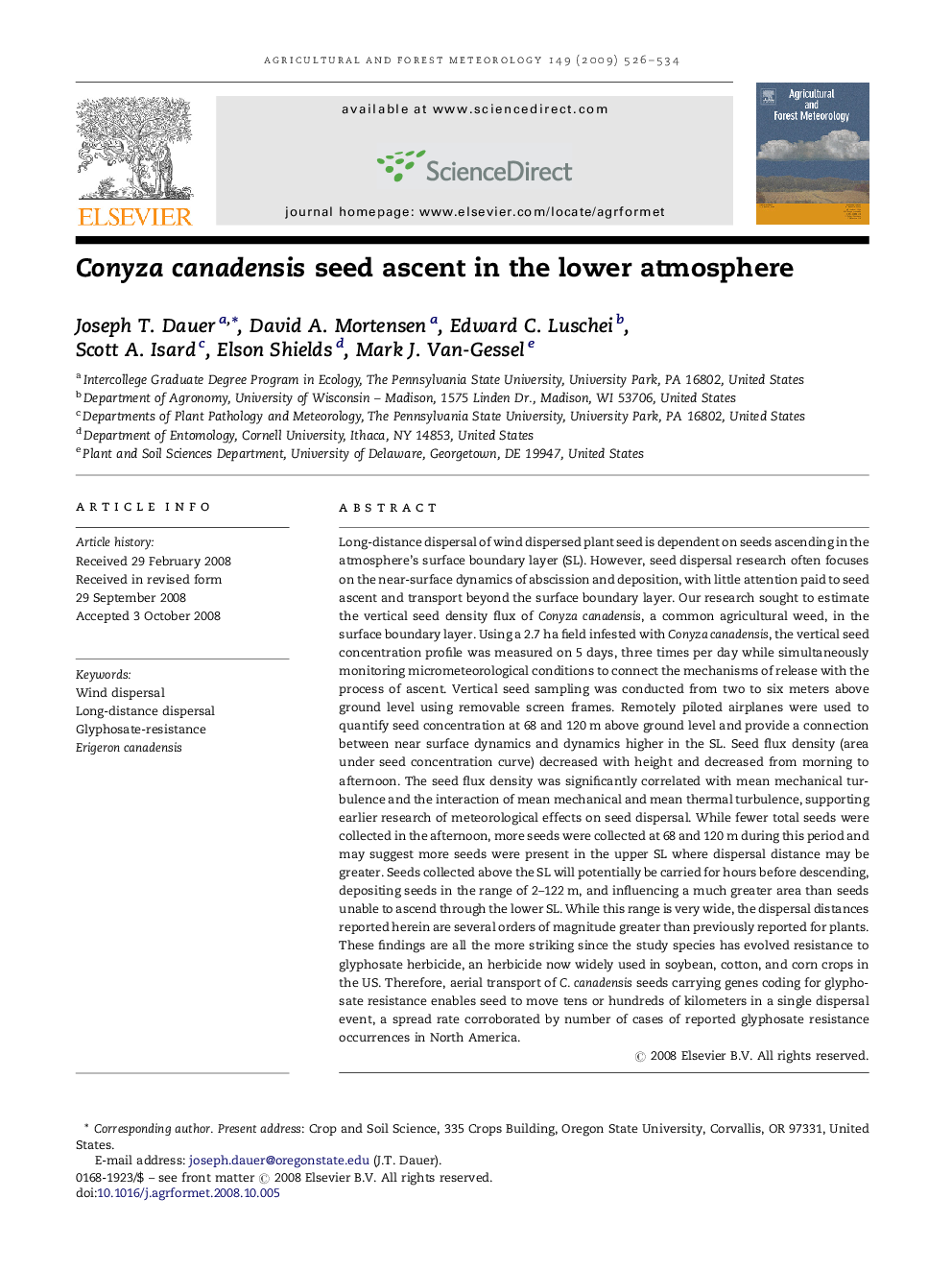| کد مقاله | کد نشریه | سال انتشار | مقاله انگلیسی | نسخه تمام متن |
|---|---|---|---|---|
| 82733 | 158412 | 2009 | 9 صفحه PDF | دانلود رایگان |

Long-distance dispersal of wind dispersed plant seed is dependent on seeds ascending in the atmosphere's surface boundary layer (SL). However, seed dispersal research often focuses on the near-surface dynamics of abscission and deposition, with little attention paid to seed ascent and transport beyond the surface boundary layer. Our research sought to estimate the vertical seed density flux of Conyza canadensis, a common agricultural weed, in the surface boundary layer. Using a 2.7 ha field infested with Conyza canadensis, the vertical seed concentration profile was measured on 5 days, three times per day while simultaneously monitoring micrometeorological conditions to connect the mechanisms of release with the process of ascent. Vertical seed sampling was conducted from two to six meters above ground level using removable screen frames. Remotely piloted airplanes were used to quantify seed concentration at 68 and 120 m above ground level and provide a connection between near surface dynamics and dynamics higher in the SL. Seed flux density (area under seed concentration curve) decreased with height and decreased from morning to afternoon. The seed flux density was significantly correlated with mean mechanical turbulence and the interaction of mean mechanical and mean thermal turbulence, supporting earlier research of meteorological effects on seed dispersal. While fewer total seeds were collected in the afternoon, more seeds were collected at 68 and 120 m during this period and may suggest more seeds were present in the upper SL where dispersal distance may be greater. Seeds collected above the SL will potentially be carried for hours before descending, depositing seeds in the range of 2–122 m, and influencing a much greater area than seeds unable to ascend through the lower SL. While this range is very wide, the dispersal distances reported herein are several orders of magnitude greater than previously reported for plants. These findings are all the more striking since the study species has evolved resistance to glyphosate herbicide, an herbicide now widely used in soybean, cotton, and corn crops in the US. Therefore, aerial transport of C. canadensis seeds carrying genes coding for glyphosate resistance enables seed to move tens or hundreds of kilometers in a single dispersal event, a spread rate corroborated by number of cases of reported glyphosate resistance occurrences in North America.
Journal: Agricultural and Forest Meteorology - Volume 149, Issues 3–4, 11 March 2009, Pages 526–534